Dancing with the Stars (known in the UK as Strictly Come Dancing) is a global phenomenon with millions of viewers worldwide. The 23rd season launched in the US earlier this week, and its celebrity cast features names such as the 11-time Grammy Award winning artist, Kenny “Babyface” Edmonds; silver medal Olympic gymnast Laurie Hernandez; Broadway actress and author Marilu Henner; and Maureen McCormick, who is best known for her role as Marcia on The Brady Bunch. Other famous (some might say infamous) personalities include former Texas Governor Rick Perry and Olympic swimmer Ryan Lochte. All of them are showing their best moves in this reality show dance competition, and they’re about to be joined by mobile gaming fans.
Developer Exient has created games such as Bake Escape and brought the Angry Birds trilogy to handheld console platforms such as the Nintendo 3DS and PlayStation Vita. Today, it launched the Dancing with the Stars mobile game internationally in the US and the UK and, which coincides with the premiere of the show. But instead of being a dance and rhythm game, as many might expect, Dancing with the Stars is a match-3 game with role-playing elements. Matching gems will determine dance moves as players work to increase their fame.

Nick Harper, the COO of Exient, talked to [a]listdaily about how the partnership to create a Dancing with the Stars mobile game began and how it will complement the show moving forward.
“We launched a puzzle game called Bake Escape about a year ago,” said Harper. “We just happened to meet the BBC Worldwide at a tradeshow, and they were looking for people who were interested in making a game based on Dancing with the Stars. What was important to them was that they wanted to match elements of the show with a match-3 puzzle game—a sort of mashup of the two—and because we made Bake Escape, they knew we had the skillset to do it. The basic premise behind the game is that we want to take the audience on a shared journey of excitement to a happy, glittering world where the everyday is left behind.
“It’s not just about dancing. It’s about the lifestyle of being a celebrity, the excitement of the journey, and all the struggles of balancing your everyday life as a celebrity with the practice of being a dancer. Those were the things we were trying to capture alongside celebrity dilemmas, which are humorous and add to this idea of the fantasy world that exists in Dancing with the Stars.”
So why a match-3 game instead of a straightforward dance simulator or music and rhythm game? Harper explains that there are two main reasons to go with the puzzle format. “All the data shows that puzzle games are the primary game of choice for the target audience of the TV show,” Harper said. “Also, if you’re making a mobile game that’s purely based on rhythm or dancing, the problem there is that it becomes a timing experience. People who are playing mobile don’t necessarily want to go into that level of skill. A lot of people are playing without any music on. You’re taking all the elements that are important to a dancing game, and you can’t rely on players having them.
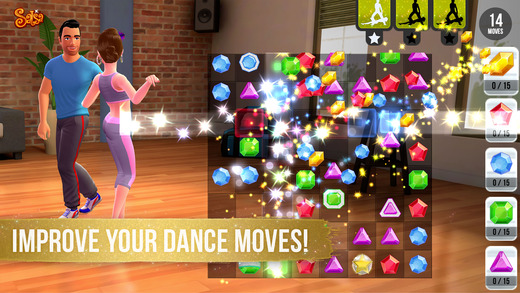
“It felt to us that having a puzzle game really resonated with the audience, and we could link it with the dancing. But in fact, there are a lot of non-puzzle elements in the game. For example, the game structure is that you practice in a week by doing the match-3, which improves your dance moves. Then you unlock a dress rehearsal, and you get fans by matching in the dress rehearsal. Then on the weekend, all the practice you put in goes into the weekend show, where it’s basically a reproduction of the TV show. In that sense, you’re not doing any match-3—you’re watching a dance performance based on the choreography you’ve established throughout the week, which gets you more fans. The ultimate goal is to become as famous as possible. You start off as a D-list celebrity, and you’re working your way up to the A-list.”
A major part Dancing with the Stars’ allure, as its title implies, is in seeing celebrities perform alongside professional dancers. We asked if the game would have any celebrity names and likenesses from the show featured on it. “That is absolutely our plan,” Harper responded. “Because you have BBC Worldwide and ABC in America, there are a lot of contractual negotiations that have to go back-and-forth. But we’re now at the point where we can start engaging with the talent. Our plan is to get the celebrity dancers. You play as a ‘celebrity,’ and our goal is to have all of the pro dancers as all of your partners. At launch, you’ll only be able to play as a female, but we’ll include male characters in an update, and you’ll be given the opposite sex as your pro dancer. The hope is that will resonate with the audience, and we want the game to be as authentic as possible. So having as many references as possible to the live show is really important.”
Harper also stated that the developers hope to have all the voices and likenesses of the pro dancers included in the game within the first year of launch. “One of the great things about service games is that you’re always working on it,” he said. “We know that there are two seasons of the show in the US, and the plan is to do a major update in March. You’ll see new dance moves, new characters and new dilemmas. One of the big things that we really want to push for is linking the live show with the app. For example, you’re watching the live show and see one of the dancers wearing a specific outfit, and that outfit will become available in the app for you to buy and wear on your character.” Harper also stated that Exient’s intention is to offer almost real-time updates to the game, but the challenge is that the show doesn’t want to reveal too far in advance what the contestants are going to wear, but the feature could be a very strong pull for fans.
Harper also detailed the differences between the US and UK versions of the show, and what the challenges of promoting the game for the for audiences were. “The interesting thing is that the US version is a little bit more saucy than the UK version,” he said. “The dances are a little more extravagant, and it’s a lot more showy—the UK version is more conservative. We have to be quite sensitive about things like how the US costumes have a lot more flesh on display.”
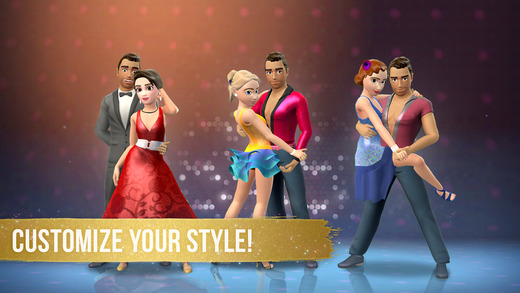
Exient plans to include a social element by capturing the audience participation part of the show. Players can watch other people’s dances and vote on the performances they like best. As for the music selection, which is also a significant part of the show, Harper stated that the game has a number of tunes that will match different dance styles. But if the game becomes very popular, the developer would like to migrate towards getting licensed music.
The Indian version of the Dancing with the Stars game, which is already live, features cross promotion with the live show. The game promotes the TV show, and the show encourages viewers to download the game. The same promotion is likely to be included in the US and UK shows. “We want to be an extension of the life of the Dancing with the Stars universe,” Harper explained. “It’s not a case of, ‘this is an app that’s like Dancing with the Stars, but it’s separate from the TV show.’ We really want it to feel like a sort of second screen experience, where if you love the show you’ll play the app.
“The app is connected to the show, the show talks to the app. Stuff happens on the show then happens in the app. We have a fake Twitter that exists in the app, which talks to you about how you’re doing in the game. Our ultimate goal is to enable that to include what’s happening on the live TV show, so you really feel connected. But at the same time, we don’t want to take people away from the TV show when it’s airing.”
We also asked Harper how a Dancing with the Stars game would stand out in a mobile market that’s already crowded with match-3 games. “I think what we’ve created is a real sense of magic in the mobile gaming world. We’ve got these beautiful characters doing amazing dancing with a real sense of fantasy magic. There’s a nice structure to it with the weekly practice and live show, but you also have all these dilemmas interspersed with it. It’s kind of a parody of what it’s like to be a celebrity.
“It might be things like having to go to a movie premiere. Do you turn up, or do you stay practicing your dance moves? Whatever you do has an impact on your celebrity status. Turn up, and you’ll get more fans. Stay and practice and people don’t see you, but you might improve your dance moves. I think what we’re doing is creating an experience that captures the fantasy of the Dancing with the Stars universe in a really accessible mobile game.”
When asked what he thought attracted so many fans to Dancing with the Stars, Harper said: “I think it’s the escapism. It’s a happy, glittery world. Nothing negative happens in the Dancing with the Stars world. You have crisis and dilemmas with injuries and things like that, but everything is about the joy of dance and the romanticism of dance—the pizazz of it all—in this amazing setting that creates a fantastic escapist experience. People go there every week to escape and look at these beautiful bodies doing amazing things in an amazing setting. I think it creates a great atmosphere for the family to enjoy. That’s what we’re trying to recreate with the game.”

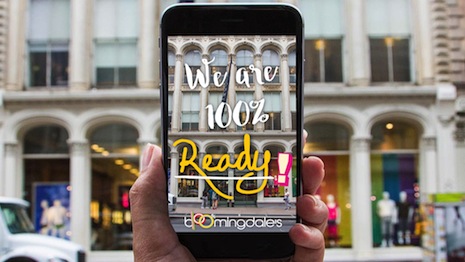
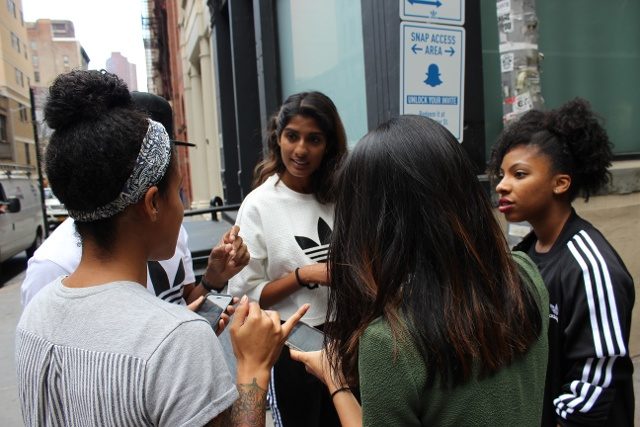
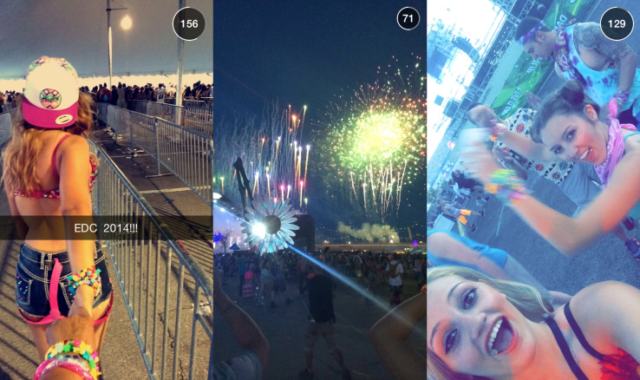
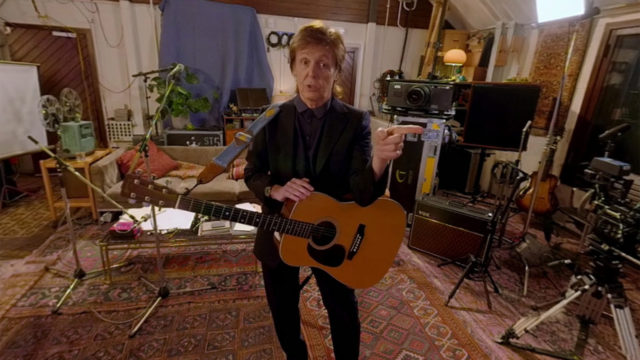

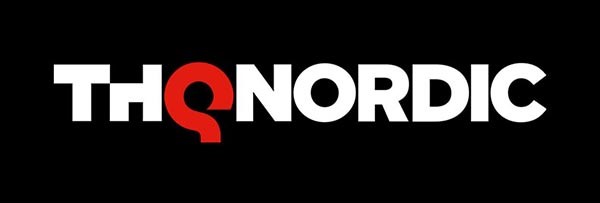

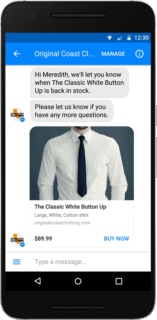 During TechCrunch’s annual Disrupt conference in San Francisco on Monday, Marcus announced a significant change to how Facebook chat bots can turn
During TechCrunch’s annual Disrupt conference in San Francisco on Monday, Marcus announced a significant change to how Facebook chat bots can turn 